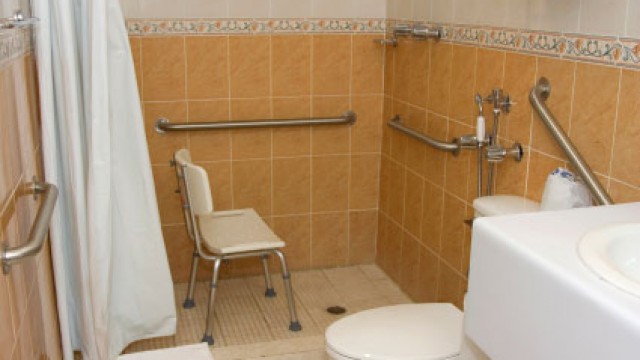References
- Ministry of Health. Health loss in New Zealand: A report from the New Zealand Burden of Diseases, Injuries and Risk Factors Study 2006–2016. Wellington, Ministry of Health, 2013.
- New Zealand Ministry of Health, Accident Compensation Corporation (ACC). Injury-related Health Loss: A report from the New Zealand Burden of Diseases, Injuries and Risk Factors Study 2006–2016. In. Wellington, New Zealand; 2013.
- Cumming RG, Thomas M, Szonyi G, et al. Home visits by an occupational therapist for assessment and modification of environmental hazards: a randomized trial of falls prevention. Journal of the American Geriatrics Society. 1999;47(12):1397-1402.
- Pynoos J, Steinman BA, Nguyen AQ. Environmental assessment and modification as fall-prevention strategies for older adults. Clin Geriatr Med. 2010;26(4):633-644.
- Gillespie LD, Robertson MC, Gillespie WJ, et al. Interventions for preventing falls in older people living in the community. Cochrane Database of Systematic Reviews (Online). 2012;9:CD007146.
- World Health Organization. Falls: fact sheet No. 344 http://www.who.int/mediacentre/factsheets/fs344/en/2012.
- Pega F, Kvizhinadze G, Blakely T, Atkinson J, Wilson N. Home safety assessment and modification to reduce injurious falls in community-dwelling older adults: cost-utility and equity analysis. Injury Prevention 2016 (E-publication 24 May).
- Keall MD, Pierse N, Howden-Chapman P, et al. Home modifications to reduce injuries from falls in the Home Injury Prevention Intervention (HIPI) study: a cluster-randomised controlled trial. Lancet. 2015;385:231-8.
- Thomas S, Mackintosh S, Halbert J. Does the ‘Otago exercise programme’reduce mortality and falls in older adults?: a systematic review and meta-analysis. Age and Ageing. 2010;39:681-687.
- Robertson MC, Devlin N, Scuffham P, et al. Economic evaluation of a community based exercise programme to prevent falls. Journal of Epidemiology & Community Health. 2001;55(8):600-606.
- Robertson MC, Devlin N, Gardner MM, Campbell AJ. Effectiveness and economic evaluation of a nurse delivered home exercise programme to prevent falls. 1: Randomised controlled trial. BMJ. 2001;322(7288):697-701.
- Robertson MC, Gardner MM, Devlin N, et al. Effectiveness and economic evaluation of a nurse delivered home exercise programme to prevent falls. 2: Controlled trial in multiple centres. BMJ. 2001;322(7288):701-704.
- Hirano M, Hanajima N, Urita K, et al. Development of an Exercise Support System for the Elderly Which Uses a Small Humanoid Robot. Journal of Robotics and Mechatronics. 2013;25(6):939-948.
- Stafford RQ, MacDonald BA, Jayawardena C, et al. Does the Robot Have a Mind? Mind Perception and Attitudes Towards Robots Predict Use of an Eldercare Robot. International Journal of Social Robotics. 2013;6(1):17-32.
- Matsusaka Y, Fujii H, Okano T, Hara I: Health exercise demonstration robot TAIZO and effects of using voice command in robot-human collaborative demonstration. In: RO-MAN 2009 – The 18th IEEE International Symposium on Robot and Human Interactive Communication: Sept. 27 to Oct. 2 2009;472-477.
- Gulliver P, Dow N, Simpson J. The epidemiology of home injuries to children under five years in New Zealand. Aust N Z J Public Health. 2005;29(1):29-34.
- Kool B, Ameratunga S, Robinson E, Crengle S, Jackson R. The contribution of alcohol to falls at home among working-aged adults. Alcohol. 2008;42(5):383-388.
- Thornley S, Kool B, Marshall RJ, Ameratunga S. Alcohol intake, marijuana use, and sleep deprivation on the risk of falls occurring at home among young and middle-aged adults: a case-crossover study. N Z Med J. 2014;127(1406):32-38.
- Kool B, Ameratunga S, Jackson R. The role of alcohol in unintentional falls among young and middle-aged adults: a systematic review of epidemiological studies. Inj Prev. 2009;15(5):341-347.
About the Briefing
Public health expert commentary and analysis on the challenges facing Aotearoa New Zealand and evidence-based solutions.
Subscribe

Public Health Expert Briefing
Get the latest insights from the public health research community delivered straight to your inbox for free. Subscribe to stay up to date with the latest research, analysis and commentary from the Public Health Expert Briefing.
